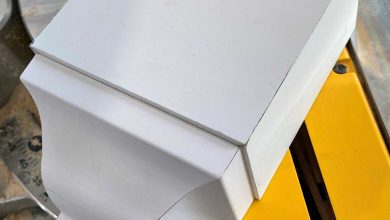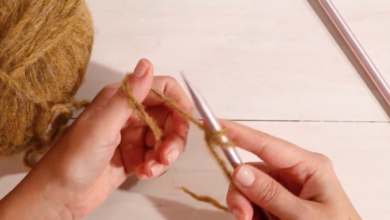How to Clean Your Phone

[ad_1]
- Research suggests that your phone is likely playing host to viruses and bacteria.
- In addition to frequently washing your hands and following other COVID-19 best practices, experts say that deep cleaning your phone at least twice a week is best.
- The best way to sanitize a phone involves a Lysol disinfecting wipe.
Elevator buttons, handrails, gas pumps, door handles: It’s impossible to avoid germ-infested surfaces in our daily lives, which is why it’s essential to wash your hands thoroughly and regularly. But even though there’s no way to guarantee that all public surfaces are routinely sanitized, there is one surface that regularly comes in contact with your hands and face that you do have control over: your cell phone.
Just how filthy is the average phone? A 2017 study published in the journal Germs looked at 27 phones owned by teenagers and found that the screens were playing host to viruses and bacteria including E. coli, Staphylococcus aureus, and Streptococcus, among other icky germs.
It’s worth noting that phones are not one of the main culprits when it comes to spreading disease, but some viruses can stick around for longer than you’d think. Charles Gerba, Ph.D., a professor of epidemiology and biostatistics in the Department of Environmental Science at the University of Arizona, says that viruses can linger on hard surfaces anywhere from a few hours to a couple of weeks. “Most cold and flu viruses [can] survive from a few hours to up to 9 days, depending on the temperature and relative humidity,” says Dr. Gerba. “[However] norovirus can survive on surfaces for up to four weeks.”
Over the last year, scientists have worked to establish how long the novel coronavirus can live on surfaces. For phones made with glass fronts, a touchscreen can harbor potentially infectious SARS-CoV-2 virus for up to 4 days in the right conditions. And plastic and metal, used in a phones’ outer body or case, can also play host to the virus for up to 7 days, per multiple points of data recorded in 2020. Based on his own research, Gerba says viruses and bacteria can transfer from a phone onto your hands and then back onto new surfaces in your home and office (“It’s like a germ-mobile device,” he explains).
That said, Carolyn Forte, the director of the Good Housekeeping Institute Cleaning Lab, says that cleaning your phone shouldn’t be something that you lose sleep over — but a regular sanitizing routine could reduce your risk of coming into contact with germs, especially during flu season.
This content is imported from {embed-name}. You may be able to find the same content in another format, or you may be able to find more information, at their web site.
When it comes to cleaning your phone, the first rule is that you shouldn’t use the same astringent cleaners that you use to wipe down hard plastic and glass surfaces elsewhere in your home, like pure bleach, metal cleaners, or bathroom-specific cleansers aimed at tile or grout. “Never spray anything directly onto the phone, and avoid over-saturating, as you don’t want your phone to become wet,” Forte advises. “Also, avoid any cleaners that advertise ‘scrubbing power’ or anything similarly abrasive.”
Similarly, Apple warns customers that heavy-duty commercial cleaning supplies can damage the fingerprint-resistant coatings on its screens and possibly scratch the glass fronts, while Samsung has published the same warning for its popular Galaxy models.
Below, Forte shares step-by-step instructions for how to safely clean your phone without ruining it.
How to clean and disinfect your phone:
- Remove your phone case and power down your device.
- Polish with a microfiber cloth. Gently wipe the exterior of your phone with a clean microfiber cloth to get rid of smudges and crud. “This will physically remove germs, due to the friction between the cloth and the glass surface,” Forte says. That doesn’t mean it will kill germs, but it will lift them from the surface — and microfiber does this better than a washcloth or a paper towel could, since the fibers have more surface area for trapping dirt and they absorb grease well.
- Next, reach for a Lysol disinfecting wipe. Lysol products are marketed to shoppers as being safe for topical use on electronics, Forte says, adding that they’ll effectively neutralize any leftover germs. “If the wipe is excessively wet, wring it out first,” says Forte. Then, gently wipe down every surface of your phone while avoiding the ports.
- Let your phone air dry for a minimum of 5 minutes. Like most disinfectants, Lysol spray is most effective if left to air dry on surfaces for at least 10 minutes. But even if you don’t leave your phone wet for that long, “a Lysol wipe will sanitize your phone greatly,” Forte explains, as the manufacturer says these wipes only need four minutes to disinfect.
- Reach for a clean paper towel or microfiber cloth. Wipe away any leftover moisture. Ideally, you shouldn’t be using the same microfiber cloth as in step 2, but another one that you’ve recently washed with the help of a laundry sanitizer (like Lysol Laundry Sanitizer). “Some microfiber cloths can be bleached, but not all. Dirty cloths should be cleaned regularly to avoid re-depositing soil back on surfaces and prevent the spread of germs,” Forte says. “Regular washcloths can be washed with bleach. Both regular and microfiber cloths can also be boiled for a few minutes.”
- Finally, clean your phone case. Repeat the same process with your phone case, but note that you can use more astringent cleaners, as most phone cases are made from durable hard plastic. Apple maintains that you shouldn’t use bleach on accessories that contain fabric or leather surfaces.
Can I use Clorox wipes on my phone?
Forte says that most Clorox wipes should be safe to use on electronics, but she recommends Lysol products first as the brand readily advertises that its cleaning wipes won’t affect the screen quality of your smartphone. If you don’t have access to Lysol wipes, a Clorox wipe is okay to use — Apple has updated its advice in the last year to say that Clorox-branded disinfecting wipes and other common disinfectants are safe to use on your phone. Or, you can try a mixture of mild soap and water applied to a microfiber cloth. “Soap and water won’t be as effective as a wipe, but it may also work to reduce the germs living on your phone if carefully applied in the same way you would use a wipe,” Forte says.
You may also want to consider purchasing a screen protector. Not only can these covers help protect your phone’s screen if you drop it, but they can stand up to powerful astringents, Clorox wipes, or most any cleaner, as most models are made from glass or plastic alone (and often without smudge-resistant layers that can dissolve).
How often should I clean my phone?
It might not the answer you’re hoping for, but Forte says a quick wipe down of your cell phone with a microfiber cloth is most effective if you do it on a daily basis. “You don’t have to do a deep clean every day, but I keep a few microfiber cloths handy at my desk and at home, and I use them to quickly wipe away the grime on my screen every day,” Forte shares. “Especially during the colder months, I recommend using a Lysol wipe every other day or at least twice a week.”
If wiping down your phone on a daily basis sounds like something you won’t remember to do, you could try harnessing the power of ultraviolet light. “UV light damages the nucleic acid of the virus, making it no longer infectious,” explains Dr. Gerba, adding that the dose of UV light and how close it is to your phone determines how long you’ll need to use it. Good Housekeeping‘s Forte says products like PhoneSoap, a device that allows users to leave their phone in an enclosed UV light-charged space for a full 10 minutes, are available. But both experts agree that washing your hands and using a disinfecting wipe to sanitize your phone is a better option than using UV light.
How to keep your cell phone clean:
Even if you take the time to clean your phone regularly, it can quickly become exposed to germs and other harmful bacteria again. What are the best ways to reduce the amount of ick that your phone is exposed to? Here are a few situations where your phone should remain firmly in your pocket.
- Avoid scrolling on public transit. If you can manage it, avoid using your phone while commuting on public transit, as the germs you come into contact with on railings and handles can easily end up on the phone’s screen. The best time to use your phone on the train, bus, or ferry is when you’re sitting down and not clutching a pole or handle.
- Leave the phone out of the bathroom. A 2018 survey found that 3 in 4 Americans either text, call, or scroll while in the restroom. And while you should be washing your hands before and after using the toilet, there’s plenty of research illustrating just how many harmful germs are found lurking in bathrooms in general, making it easy for them to end up on your screen.
- Print out your recipes. If you can have your phone read instructions to you, that’s a good alternative. Cross-contamination between your phone and kitchen surfaces can be easy if you’re cooking with raw ingredients, including poultry, beef, pork, and fish. Be sure to wash your hands thoroughly before and after handling raw ingredients while you cook, and you’ll also save your phone’s screen.
- Strap it on at the gym. Placing your phone in an armband or safely in a utility pocket is a much better option than letting it rest on workout equipment that might not have been thoroughly sanitized between uses.
This content is created and maintained by a third party, and imported onto this page to help users provide their email addresses. You may be able to find more information about this and similar content at piano.io
[ad_2]
Source link






